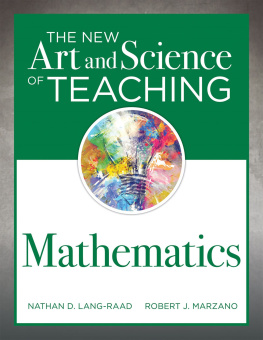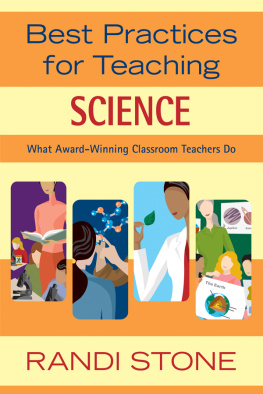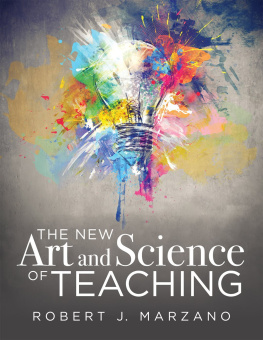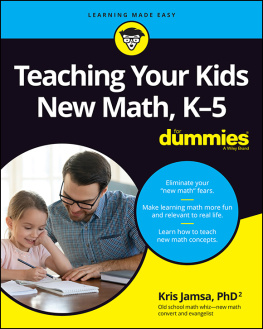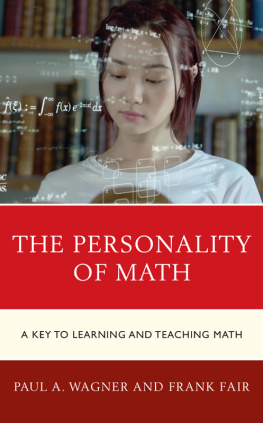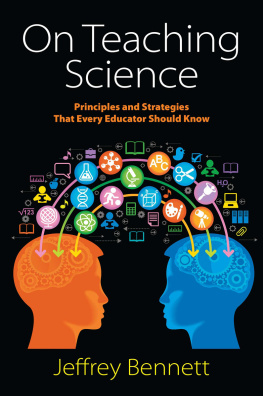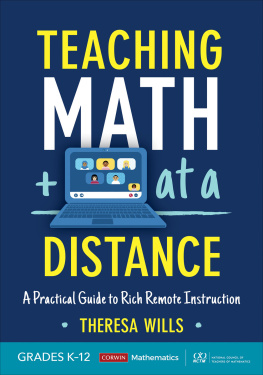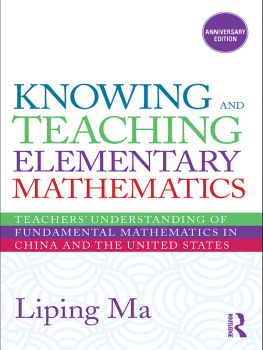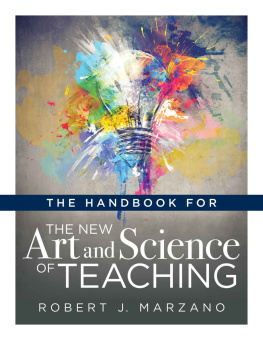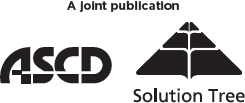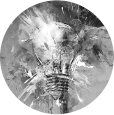
THE NEW
Art and Science
OF TEACHING
Mathematics
NATHAN D. LANG-RAADROBERT J. MARZANO
Copyright 2019 by Solution Tree Press
Materials appearing here are copyrighted. With one exception, all rights are reserved. Readers may reproduce only those pages marked Reproducible. Otherwise, no part of this book may be reproduced or transmitted in any form or by any means (electronic, photocopying, recording, or otherwise) without prior written permission of the publisher.
555 North Morton Street
Bloomington, IN 47404
800.733.6786 (toll free) / 812.336.7700
FAX: 812.336.7790
email:
SolutionTree.com
Visit go.SolutionTree.com/instruction to download the free reproducibles in this book.
Printed in the United States of America
Library of Congress Cataloging-in-Publication Data
Names: Lang, Nathan D., author. | Marzano, Robert J., author.
Title: The new art and science of teaching mathematics / Nathan D. Lang-Raad and Robert J. Marzano.
Description: Bloomington, IN : Solution Tree Press, [2019] | Includes bibliographical references and index.
Identifiers: LCCN 2018042848 | ISBN 9781945349652 (perfect bound)
Subjects: LCSH: Mathematics--Study and teaching. | Mathematics teachers--Training of. | Effective teaching. | Teaching--Aids and devices. | Learning, Psychology of.
Classification: LCC QA11.2 .L342 2019 | DDC 510.71--dc23 LC record available at https://lccn.loc.gov/2018042848
Solution Tree
Jeffrey C. Jones, CEO
Edmund M. Ackerman, President
Solution Tree Press
President and Publisher: Douglas M. Rife
Associate Publisher: Sarah Payne-Mills
Art Director: Rian Anderson
Managing Production Editor: Kendra Slayton
Senior Production Editor: Suzanne Kraszewski
Senior Editor: Amy Rubenstein
Copy Editor: Miranda Addonizio
Proofreader: Elisabeth Abrams
Text and Cover Designer: Rian Anderson
Editorial Assistant: Sarah Ludwig
I dedicate this book to my husband, Herbie Raad. Your unending support, encouragement, creativity, and love inspires me to aim higher than I ever could have on my own. You kept me on schedule, edited and proofed, and gave me the best advice. Thank you for being you. I love you so.
Nathan Lang-Raad
Visit go.SolutionTree.com/instruction to download the free reproducibles in this book.
Table of Contents
About the Authors
Nathan D. Lang-Raad, EdD, is a speaker, author, and professional learning facilitator. He is chief education officer at WeVideo. Throughout his career, he has served as a teacher, assistant principal, university adjunct professor, consultant, and education strategist. He was director of elementary curriculum and instruction for Metropolitan Nashville Public Schools, as well as education supervisor at NASAs Johnson Space Center. He speaks at both local and national professional conferences, and is the cofounder of Bammy Awardnominated #LeadUpChat, an educational leadership professional learning network (PLN) on Twitter. Nathan is also the cofounder of #divergED, a Twitter chat focused on divergent thinking and innovations in education. He is a Google Certified Educator, Microsoft Innovative Educator, and 2016 Apple Teacher. He serves on the Childrens Right to Read International Literacy Association Task Force and is a board member on the Student Voice Foundation.
Nathan has written several blog posts that have been featured on the EdTech K12, Corwin Connect, Education Week, K12 Blueprint, and Solution Tree websites.
Nathan received a bachelor of arts degree in general sciencechemistry from Harding University in Searcy, Arkansas, a master of education degree in administration and supervision from the University of HoustonVictoria, and a doctorate of education degree in learning organizations and strategic change from David Lipscomb University in Nashville, Tennessee.
To learn more about Nathans work, visit www.drlangraad.com or follow @drlangraad on Twitter.

Robert J. Marzano, PhD, is the cofounder and chief academic officer of Marzano Research in Denver, Colorado. During his fifty years in the field of education, he has worked with educators as a speaker and trainer and has authored more than forty books and three hundred articles on topics such as instruction, assessment, writing and implementing standards, cognition, effective leadership, and school intervention. His books include The Art and Science of Teaching, The Handbook for the New Art and Science of Teaching, The New Art and Science of Teaching Writing, The New Art and Science of Teaching Reading, The New Art and Science of Classroom Assessment, Leaders of Learning, The Classroom Strategies Series, A Handbook for High Reliability Schools, Awaken the Learner, and Managing the Inner World of Teaching. His practical translations of the most current research and theory into classroom strategies are known internationally and are widely practiced by both teachers and administrators.
He received a bachelors degree from Iona College in New York, a masters degree from Seattle University, and a doctorate from the University of Washington.
To learn more about Dr. Marzanos work, visit www.marzanoresearch.com.
Introduction
The New Art and Science of Teaching (Marzano, 2017) is a comprehensive model of instruction with a rather long developmental lineage. Specifically, four books spanning two decades precede and inform The New Art and Science of Teaching and its use in the field.
1. Classroom Instruction That Works: Research-Based Strategies for Increasing Student Achievement (Marzano, Pickering, & Pollock, 2001)
2. Classroom Management That Works: Research-Based Strategies for Every Teacher (Marzano, Marzano, & Pickering, 2003)
3. Classroom Assessment and Grading That Work (Marzano, 2006)
4. The Art and Science of Teaching: A Comprehensive Framework for Effective Instruction (Marzano, 2007)
The first three books address specific components of the teaching process, namely instruction, management, and assessment. The final book puts all three components together into a comprehensive model of teaching. It also makes a strong case for the fact that research (in other words, science) must certainly guide good teaching, but teachers must also develop good teaching as art. Even if they use precisely the same instructional strategies, two highly effective teachers will have shaped and adapted those strategies to adhere to their specific personalities, the subject matter they teach, and their students unique needs. Stated differently, we can never accurately articulate effective teaching as a set of strategies that all teachers must execute in precisely the same way.
Next page
